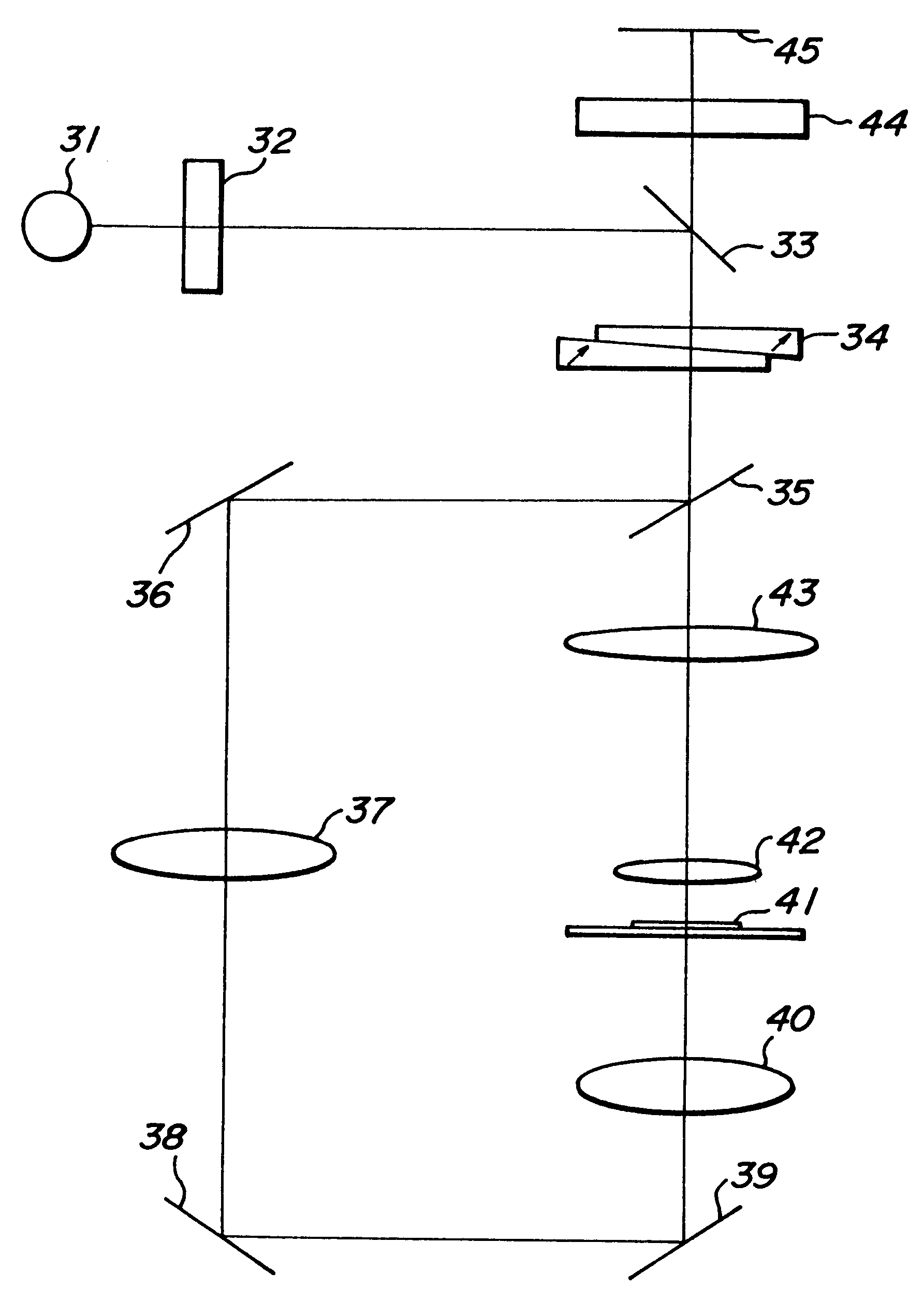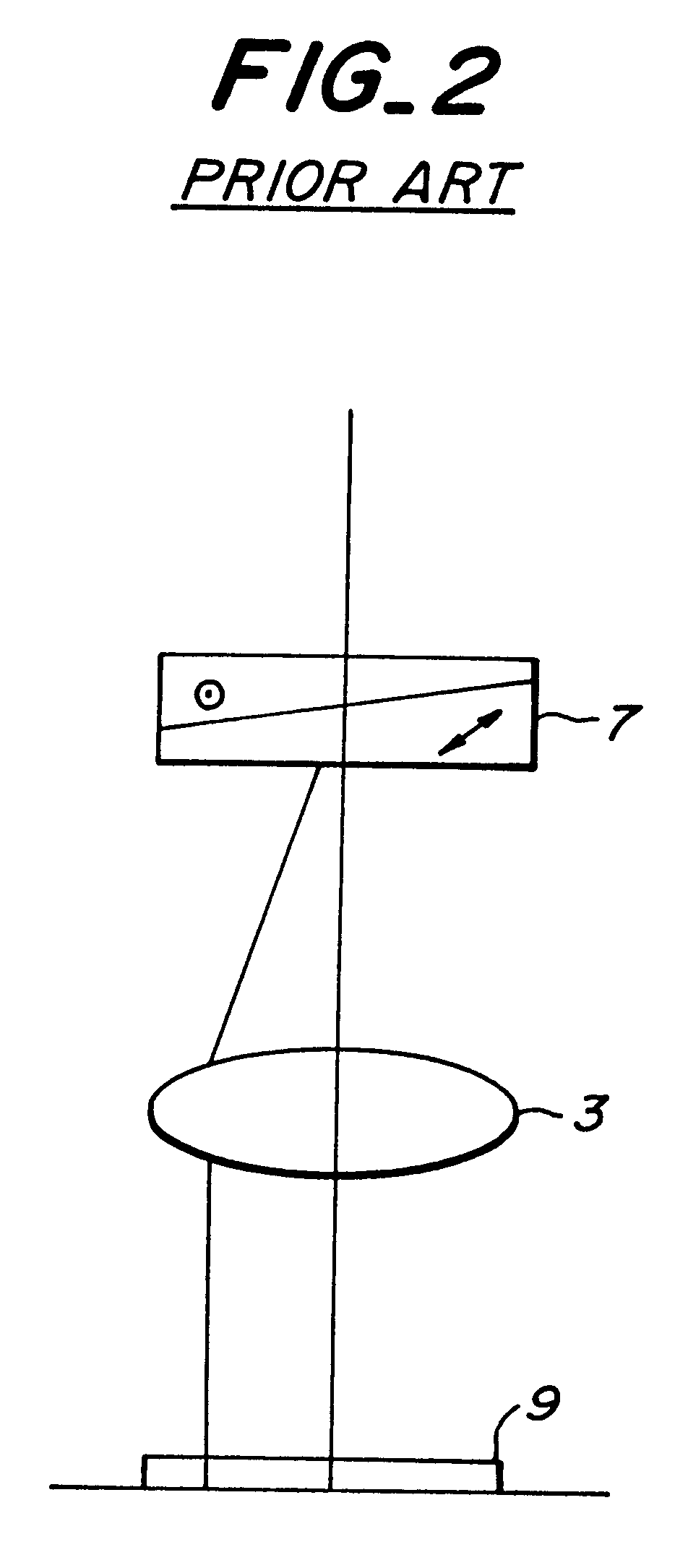Differential interference contrast microscope and microscopic image processing system using the same
a contrast microscope and microscopic image technology, applied in the field of differential interference contrast microscopes, can solve the problems of reducing the resolution of the image, liable to be rather expensive, and the cost of preparing a plurality of expensive nomarski prisms becomes very high
- Summary
- Abstract
- Description
- Claims
- Application Information
AI Technical Summary
Benefits of technology
Problems solved by technology
Method used
Image
Examples
first embodiment
FIG. 3 is a schematic view showing the differential interference contrast microscope of transmission type according to the invention. A light ray emitted from an illuminating light source 61 is converted by a polarizer 62 constituting the first polarizing means into a linearly polarized light ray, and then the linearly polarized light ray is made incident upon a polarized light separating means 63 and is divided into two linearly polarized light rays whose vibrating directions are mutually orthogonal. According to the invention, the polarized light separating means 63 is constructed such that an amount of wavefront shear between said two linearly polarized light rays can be changed continuously. For instance, the polarized light separating means 63 may be constructed by a pair of wedge-shaped crystal plates, at least one of which is movable in a direction perpendicular to an optical axis.
In the present emodiment, the two linearly polarized light rays with orthogonal vibrating direct...
second embodiment
FIG. 7 is a schematic view showing the differential interference contrast microscope of transmission type according to the invention. In the present embodiment, an illumination light ray emitted by an illumination light source 31 is converted into a linearly polarized light ray by an analyzer 32 constituting the first polarizing means, and then the thus linearly polarized light ray is reflected by a half mirror 33 and is made incident upon a polarized light separating and combining means 34, in which an amount of wavefront shear can be changed. Then, two linearly polarized light rays having mutually orthogonal vibrating directions emanate from the polarized light separating and combining means 34 in parallel with each other. These linearly polarized light rays are reflected by a half mirror 35, and are made incident upon an object 41 under inspection by means of reflection mirror 36, illuminating lens 37, reflection mirrors 38 and 39 and illuminating lens 40. The two linearly polari...
third embodiment
FIG. 9 is a schematic view illustrating the differential interference contrast microscope of transmission type according to the invention, in which the separation and combination of the two linearly polarized light rays are carried out by one and same polarized light separating and combining means. In this embodiment, a light ray emitted by an illumination light source 81 is converted into a linearly polarized light ray by an analyzer 82, and then the linearly polarized light ray is made incident upon a first portion of a polarized light separating and combining means 84 by means of a mirror 83a and is separated into two linearly polarized light rays which have mutually orthogonal vibrating directions and propagate in parallel with each other. The polarized light separating and combining means 84 may be formed by two wedge-shaped crystal plates like as the polarized light separating and combining means 34 shown in FIG. 8. Then, an amount of wavefront shear can be adjusted by moving ...
PUM
 Login to View More
Login to View More Abstract
Description
Claims
Application Information
 Login to View More
Login to View More - R&D
- Intellectual Property
- Life Sciences
- Materials
- Tech Scout
- Unparalleled Data Quality
- Higher Quality Content
- 60% Fewer Hallucinations
Browse by: Latest US Patents, China's latest patents, Technical Efficacy Thesaurus, Application Domain, Technology Topic, Popular Technical Reports.
© 2025 PatSnap. All rights reserved.Legal|Privacy policy|Modern Slavery Act Transparency Statement|Sitemap|About US| Contact US: help@patsnap.com



